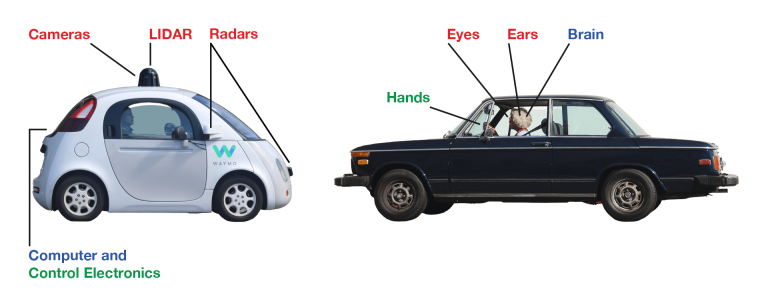What Causes Windshield to Fog: 5 Surprising Culprits
Condensation occurs when warm, moist air hits the colder windshield, causing fogging. Factors like temperature differences and humidity also contribute to windshield fogging.
This can occur due to high humidity levels inside the car or external environmental conditions, such as living in a region with high humidity. Additionally, the presence of residual water particles or moisture reservoirs inside the car can exacerbate the problem.
Understanding these causes can help implement preventative measures to minimize windshield fogging issues. Simple solutions like keeping the car cold, using windshield covers, or parking in sunny areas can help mitigate condensation and keep your windshield clear.

Credit: www.wilsonpro.com
Common Causes Of Windshield Fogging
Temperature Difference
When the inside of the car is warmer than the outside, it causes the windshield to fog up.
High Humidity Levels
Excess moisture in the air increases humidity levels, leading to windshield fogging.
Moisture Inside The Car
If there is moisture inside the car from wet clothes or spills, it can contribute to windshield fogging.

Credit: www.npr.org
Unexpected Culprits For Windshield Fogging
Moist, warm air condensing when it hits your car’s colder windshield causes condensation, but there are unexpected culprits to consider. Even seemingly harmless items can contribute to fogging issues.
Simply having a damp towel or a spilled drink from a few years ago in the car can lead to a LOT of condensation. These seemingly minor factors can create a reservoir of moisture that contributes to windshield fogging.
Effects Of Weather And Climate On Windshield Fogging
The weather and climate can directly impact windshield fogging due to variations in humidity and temperature levels. When warm, moist air comes into contact with a colder windshield, condensation occurs, leading to fogging. Proper ventilation, using a windshield cover, and ensuring the car is cold can help prevent or reduce windshield fogging.
Impact Of High Humidity
The impact of high humidity on windshield fogging cannot be overlooked. High humidity levels provide an ample supply of moisture that can quickly accumulate on the colder surface of a windshield. The warm, moist air carries a significant amount of water vapor, and when it comes into contact with the colder windshield surface, it condenses, leading to fogging. The presence of a high amount of water vapor in the air exacerbates this condensation process, creating a substantial fogging effect on the windshield.
Cold Weather Conditions
Cold weather conditions are another significant factor contributing to windshield fogging. During winter, the exterior air temperature decreases rapidly, causing the windshield to become cold. When the interior of the vehicle is heated, the warm air contains moisture. This warm, moist air comes into direct contact with the cold windshield surface, leading to fogging. It is crucial to understand the impact of cold weather on windshield fogging to effectively address this issue.
Practical Solutions To Prevent Windshield Fogging
Prevent windshield fogging by keeping car interior cool, using a windshield cover, and parking in the sun. Moist, warm air condensing on colder windshield causes condensation buildup. Regular cleaning can help prevent a thick layer of haze over time.
Foggy windshields can be a major inconvenience for drivers, obstructing visibility and posing safety risks. To address this issue, there are several practical solutions that can help prevent windshield fogging. By regulating the interior temperature and utilizing dehumidifiers, you can significantly reduce the chances of fog formation on your windshield.
Regulating Interior Temperature
One of the main reasons for foggy windshields is the temperature difference between the inside and outside of your car. To prevent this, keep your car as cold as possible. This can be achieved by using your air conditioning system to circulate cool air throughout the car. The cool air reduces the relative humidity inside the car, minimizing the chances of condensation on the windshield.
If you notice your windows starting to fog up, open the windows a bit to allow fresh air to circulate. This helps balance the temperature and humidity inside the car, preventing the buildup of moisture on the windshield.
Another effective way to regulate the interior temperature is by using a windshield cover. This cover acts as a barrier, preventing direct contact between the cold outside air and the windshield. As a result, the temperature difference is minimized, reducing the chances of fog formation.
Utilizing Dehumidifiers
Dehumidifiers are excellent tools for reducing the moisture levels inside your car, making it less prone to foggy windshields. These devices work by removing excess moisture from the air, maintaining a dry and comfortable atmosphere inside.
There are various types of dehumidifiers available, including both electric and desiccant models. Electric dehumidifiers use a refrigeration process to condense moisture from the air, while desiccant dehumidifiers use moisture-absorbing materials to achieve the same effect.
Place the dehumidifier in your car, and let it run for a period of time to absorb any excess moisture. This simple step can significantly reduce the chances of windshield fogging, even in humid conditions.
By implementing these practical solutions, you can effectively prevent windshield fogging and ensure clear visibility while driving. Regulating the interior temperature and utilizing dehumidifiers are simple yet effective measures that can make a significant difference in your driving experience.
Effective Defogging Techniques For Windshields
Prevent windshield fogging by maintaining uniform temperature inside and outside your car. Remove moisture buildup with dehumidifiers and windshield covers. Environmental factors like humidity and temperature differences can cause fog, affecting visibility and safety while driving.
Using Defog/defrost Buttons
When it comes to effectively defogging your windshield, one of the simplest and most efficient techniques is to utilize the defog/defrost buttons in your car. This feature is specifically designed to quickly clear fog and condensation from your windshield, ensuring optimal visibility while driving.Optimizing Air Conditioning
Another effective technique for defogging windshields is to optimize your car’s air conditioning system. The air conditioning in modern cars not only cools down the interior but also dehumidifies the air by removing excess moisture. This helps prevent fogging on the windshield. In order to maximize the effectiveness of your air conditioning, make sure to set it to the coldest temperature and turn on the A/C button. Additionally, if your car is equipped with a recirculation button, it is advisable to turn it off to allow fresh air to circulate.In conclusion, these defogging techniques, such as using the defog/defrost buttons and optimizing the use of air conditioning, are effective and easy ways to clear fog from your windshield. By implementing these strategies, you can ensure clear visibility and a safer driving experience.

Credit: www.germainhondaofsurprise.net
Frequently Asked Questions For What Causes Windshield To Fog
How Do I Stop My Windshield From Fogging Up?
To prevent windshield fogging, keep your car as cold as possible, open windows slightly, use a windshield cover, park in the sun, and use a dehumidifier. Additionally, running the defog/defrost and air conditioning helps quickly defog the windshield. High humidity and warm interior air can also cause fogging.
How Do I Get My Windshield To Defog?
To defog your windshield, follow these steps: 1. Press the Defog/Defrost button. 2. Turn off the Recirculation button. 3. Press the Sync button (if equipped). 4. Set the fan to the highest setting. 5. Set the temperature to High (automatic system) or Full Hot (manual system).
6. Turn on the A/C. Source: GMC (exact URL not provided)
What Causes A Cloudy Windshield?
Small water particles stick to the windshield, attracting debris and dust. When humidity decreases, the water evaporates but leaves behind residue. Over time, this creates a layer of dirt and haze. High humidity outside the car can also cause foggy windows.
Why Does My Windshield Fog Up More Than Others?
Your car might be more airtight, or there could be hidden moisture sources like a damp seat cushion or water in the trunk. These can cause excessive condensation leading to more windshield fogging. High humidity outside can also contribute to the problem.
Conclusion
Windshield fogging can be a frustrating problem, but it’s important to understand its causes. From temperature differentials to humidity levels, several factors contribute to this issue. By implementing the right preventative measures such as dehumidifiers and using windshield covers, you can effectively manage and reduce windshield fogging.
Understanding these causes is the first step to maintaining clear visibility and safe driving.






